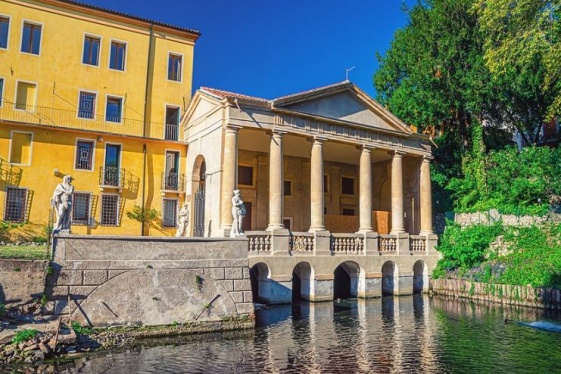Unesco Sites of Italy: City of Vicenza and the Palladian Villas of the Veneto
Vicenza, located in the region of Veneto in the north-east of Italy, was founded in the second century BC, but it wasn’t until many centuries later, when it fell under Venetian rule, that it began to prosper, turning into an important city from the 15th to the 18th century. The golden age of Vicenza began in 1540, when the Venetian aristocracy reor...
READ MORESan Gennaro, al via l’iter per il riconoscimento Unesco del “Culto e Devozione a Napoli e nel mondo”
Sarà un iter lungo e complesso. Occorrerà almeno un anno ma sabato c’è la data ufficiale di partenza per il riconoscimento Unesco del Culto e la Devozione di San Gennaro a Napoli e nel mondo quali patrimonio immateriale dell’Umanità. L’idea è di alcune importanti realtà cittadine, tutte autorevolissime e credibili. Il che fa ben sperare in una conc...
READ MORE“Italian Cuisine” is a candidate for UNESCO as a world heritage site
Italian Cuisine – from 1929 the most authoritative and long-standing cooking monthly in Italy and in the rest of the world – with the July issue launches a new and ambitious communication project aimed at supporting the universal value of gastronomic culture Italian: a great choral initiative to nominate “ Italian cuisine” as an intangible heritage...
READ MOREUnesco Sites of Italy: Arab-Norman Palermo and the Cathedral Churches of Cefalú and Monreale
Located on the north-western coast of Sicily, “Arab-Norman Palermo includes a series of nine civil and religious structures dating from the era of the Norman kingdom of Sicily (1130-1194): two palaces, three churches, a cathedral, a bridge, as well as the cathedrals of Cefalú and Monreale,” writes Unesco, which inscribed these monuments into its Wo...
READ MOREUnesco Sites of Italy: Sacri Monti of Piedmont and Lombardy
A Unesco serial site not many are familiar with, the nine Sacri Monti (Sacred Mountains) of Italy are groups of chapels created in the late 16th and 17th centuries dedicated to different aspects of the Christian faith. They are located in northern Italy, in the regions of Piedmont and Lombardy. “In addition to their symbolic spiritual meaning, they...
READ MOREPalazzo Gerolamo Grimaldi, or “of the sundial”
Palazzo Gerolamo Grimaldi is one of the 42 “Rolli”, Genoa’s historical buildings that were added to UNESCO’s World Heritage list in 2006; it was built between 1536 and 1544 by one of the city’s bankers, Gerolamo Grimaldi Oliva. Now a renowned historical home, it is also known as “Palace of the sundial” obviously due to the sundial painted on its fa...
READ MOREUnesco Sites of Italy: Val d’Orcia
Tuscany’s Val d’Orcia, inscribed by Unesco in its World Heritage list in 2004, encompasses the villages and surrounding agricultural and pastoral territories of Castiglione d'Orcia, Montalcino, Pienza, Radicofani, San Quirico d’Orcia, from the hills south of Siena to Monte Amiata, near the border with Umbria. Its hilly landscape dotted with cypress...
READ MOREUnesco Sites of Italy: The Sassi and the Park of the Rupestrian Churches of Matera
Matera, in the southern Italian region of Basilicata, is, in the words of Unesco, which inscribed it in its World Heritage list in 1993, “the most outstanding, intact example of a troglodyte settlement in the Mediterranean region, perfectly adapted to its terrain and ecosystem.” The Sassi and the Park of the Rupestrian Churches of Matera contains a...
READ MOREUnesco Sites of Italy: Historic Center of Siena
“Siena is the embodiment of a medieval city,” writes Unesco, which inscribed it into its World Heritage list in 1995. “The whole city of Siena, built around the Piazza del Campo, was devised as a work of art that blends into the surrounding landscape.” The buildings were designed to fit into the overall planned urban fabric and also to form a whole...
READ MOREUnesco Sites of Italy: Archeological Area of Agrigento
The archaeological area of Agrigento, known as the ‘Valley of the Temples,’ is located along the southern coast of Sicily; a Unesco World Heritage site since 1997, it comprises the vast territory of the ancient polis (i.e. a city-state in ancient Greece), from the Rupe Atenea hill to the acropolis of the original ancient city, as well as the sacred...
READ MORE











